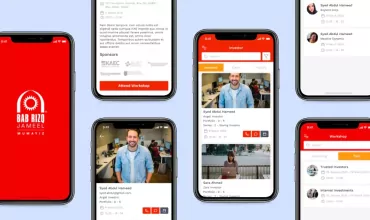Tips and tricks for successful IT Project Management

Table of Contents

As we are heading toward 2015, it’s time to turn over a new leaf. You are well aware of the fact that a successful IT project management leads to on-time completion of projects along with maintaining all the business requirements. On the flip side, lack of expertise, flexibility, and agility in IT project management service leads to failure of an IT project causing tremendous damage to business in both short-term and long-term perspective.
Successful IT project management depends on how you apply, and not on what you apply. A project manager’s attitude and behavior toward staff and clients impact largely on an IT project. As your responsibility as an IT project manager increasing by leaps and bounds these days, we just try to give a handy guide of tips and tricks for successful IT project management.
You’ll get everything right, when you avoid five mistakes
Before moving to tips for effective and fruitful IT project management, we quickly overlook following mistakes that create hurdles in the way of successful completion of an IT project:
- Without setting a goal, just blindly try to remove hurdles
- Focus on time and cost instead of quality
- Ignoring customers and others as you don’t analyze the problem in over-confidence
- Instead of thanking your team, you push them off
- Avoiding big operational problems, you just remain busy in solving trivial problems
As a project manager, you need to take the helm of such mistakes in order to ensure timely delivery of quality projects.
Tips and tricks
Project management (PM) includes management of technology, business, risk, as well as expectations of people. It requires not only skills, but also real-time implication of skills from initiation to end of any IT project.
Finally, we move to tips and tricks for obtaining success in project management. Though we focus here mainly on IT projects, such tips are helpful for project managers of any management stream.
- Lead from the Front: As a project manager, you need to assign and monitor your work to team workers, motivate them and give them real-time advice in order to maintain their efficiency throughout project execution process. Stay calm even when your project faces any hurdles. Short meetings and reward system also have been an importance, while the project is in the execution phase.
- Selection of team members: As per their interests and expertise, you need to select your team members carefully and assign them work. That’s not all. When a big project is on the floor, then you can divide it into smaller and simpler sub-projects for ensuring proper work distribution to your team members. (As per Occam’s principle: “Entities should not be multiplied unnecessary.” You can divide and sub-divide your projects in easy-to-execute mode.)
- Risk manager: You need to identify the risks from the day 1 and present there when they actually come in the way of your project. Management of risk is as important as the management of time and costs. You are also a risk manager along with a project manager.
- Define and plan: An IT project requires a clear definition and proper planning for ensuring successful completion. Prior to starting, you should defy all the aspects of project and plan for them.
- Be realistic and keep a holistic approach: When it comes to giving estimate of completion timing, be realistic and keep a holistic approach in considering your resources, skilled workforce, etc.
- Reporting: Ongoing and completed process- both require proper and unbiased reporting. As a team leader, your word is final, which means that you should remain cautious while reporting an IT project.
- Communication: It plays a crucial role in ensuring the success of any project. As your project is for people and by people, you need to communicate with different people from your team workers to clients and your seniors. Periodic communication provides support to team workers and satisfaction to clients.
The tips can lead you toward a successful completion of an IT project in a timely manner. In addition to them, some technical tips and tricks would become useful for you. Here is a small list of them:
Technical tips and tricks
- Buffer: Minimum 20% buffer is necessary for your project as per critical chain project management methodology. As per this rule, each team member should not get more than 90 hours project work per month.
- 80/20 Rule: As per the Pareto principle or the 80/20 rule, if approximately one-fifth of any IT project provide about four-fifths of benefits, then identification of essential one-fifth of the project provides you optimum results.
- Use of two linear betas: Two sequential beta roll-outs are necessary for ensuring successful completion of an IT project. In order to gain benefits of 80/20 rule, you need Beta 2 Group.
- Staff should wait for the work; work should not wait for the staff: Critical chain project management method is a better choice than traditional PM method for obtaining such situation. Chain method reduces up to 25% of the time for each phase of the project.
- Avoid multitasking: As an attempt to increasing staff utilization, some companies opt for multitasking, but in reality it is a harmful practice. Especially when you work for a bigger and complex project, multitasking results in unwanted and irreparable consequences.
- Online mind mapping: In order to get instant solutions of your project issue, you can take help of online mind mapping. It provides you real-time solutions for your issues and requirements and assists you in gaining the outcome.
- Use of collaborative technology: Collaborative tools are an integral part of online project management software that assists you to develop tailor-made social networks for your company. In other words, such tools are necessary for collaborative efforts.
n wrapping up, we can state that successful IT project management is not rocket science. As you have technical know-how of IT project management, all you need is avoiding pitfalls and taking some sensible steps for leading your IT project toward success.



